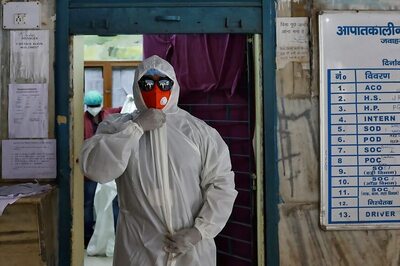
views
New Delhi: After falling to an over six-year low of 5 percent in the first quarter, India's GDP growth figures for the second quarter of the ongoing financial year will be released by the Central Statistical Office on Friday evening .
The Gross Value Added (GVA), too, had fallen to 4.9 percent in the last quarter as compared with 6.9 percent in the same period last year. Latest macroeconomic numbers do not add up to a positive expectation of growth for the current quarter as well.
Industrial production shrank by 4.3 percent in September, registering the weakest performance in seven years due to output decline in manufacturing, mining and electricity sectors.
Extended monsoon seasons, particularly heavy rains in October and November, have damaged crops in several parts of India. This has also resulted in rising prices of vegetables such as onions and tomatoes in the last two months, accelerating food inflation to nearly 8 percent in October from a year ago.
The RBI has reduced interest rates by a cumulative 135 basis points this year to 5.15 percent and it is expected to cut the repo rate in December as well for the sixth time in a row. According to RBI’s last monetary policy report, the total flow of funds to the commercial sector contracted by a massive 87.6 percent over April to mid-September 2019 (YoY).
“Economic growth may have slowed but there is no recession, there can be no recession,” said Finance Minister Nirmala Sitharaman to a discussion on the economic situation in the country in Rajya Sabha earlier this week.
The government is taking every step towards the development of the economy as it has to be given a lot of support, she added. Presenting numbers between five years under the Congress-led UPA-II regime from 2009 to 2014 and BJP’s first term from 2014 to 2019, she said that the inflation was lower and growth higher under the Narendra Modi government.
Meanwhile, the GDP growth numbers will also show how investments in the economy have fared this quarter. Data from the Centre for Monitoring Indian Economy has shown that India has seen new investments worth only Rs 1.2 trillion in April-September, lowest in absolute terms in the past seven years.
Modi's government has taken several steps, including cutting corporate tax in September, to boost investments and bolster economic growth. However, ongoing agrarian distress and dismal income growth so far, have weakened the consumption demand considerably.
Even the festive demand has failed to revive it and this is reflected in the current data of non-food credit, auto sales and select fast moving consumer goods.




















Comments
0 comment